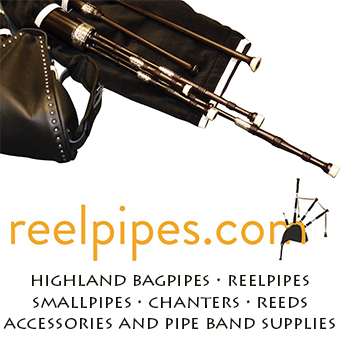
I have never been in any branch of the armed forces. I wasn’t in the Boys’ Brigade or the Boy Scouts either. Other than playing in a pipe band I didn’t grow up with any connection to any sort of military tradition. I have friends who serve currently and have served in the past. I’d like to thank them and all service personnel for their sacrifice, their discipline and their commitment to defending our way of life.
Those of you who have seen me compete or are eagle eyed enough to see my cap badge and belt buckle in pictures, may have wondered what they are. The insignia on the cap badge and buckle is of The Cameronians (Scottish Rifles), a now disbanded regiment of the British Army.
The Cameronians (Scottish Rifles) was formed in 1881 on the amalgamation of the 26th Cameronian Regiment and the 90th Perthshire Light Infantry. After the amalgamation, the 1st Battalion preferred to be known as The Cameronians while the 2nd preferred to be known as The Scottish Rifles. The Cameronians (SR) recruited from the county of Lanarkshire and my father’s grandfather served in this regiment during the First World War. The yellowed cap badge in the photograph, above, was his.
In central Scotland during the two world wars, many men stayed behind to work in the coal and steel industries. Thousands went off to fight but in my own family many were considered skilled labour. As such, they couldn’t be spared to join up or were outside the age bracket. Therefore, my family has very little military connection.
The belt buckle was a gift from a retired Cameronian to my father in the 1980s when he was Pipe Major of the Forgewood Caledonia Pipe Band.

I’ve always felt a sense of pride in the area I’m from and the service of my forebear. However, I used to feel that I never earned the right to wear these items. I felt a degree of guilt at wearing them. Others told me that it wasn’t a concern and since the regiment had been disbanded for so long no one would question my wearing of the badge. I put it from my mind and wore the insignia with pride.
Last November, I decided to pay my respects on Remembrance Day. I’m not particularly jingoistic in my personal views but when this time of year rolls round my mind wanders back to friends and acquaintances that have given up so much for their countrymen. I felt that I had some duty to perform.
I live in Glasgow’s west end and as such Kelvingrove Park is only a hop, skip and a jump from my front door. Knowing that the big war memorial for the South African war (Boer War) would be well catered for I remembered that outside the museum there was another memorial. It’s hidden by hedges and located to the left if you are facing the front door of the museum. Three figures in black atop a white plinth: a Bren gunner, a rifleman and a soldier charging. Jeannie Campbell wrote about this memorial last week on Bagpipe.news.
I live within walking distance to this memorial. An opportunity to pay my respects had appeared. I turned up on the Sunday at 10:30am (bear in mind I’m talking about Remembrance Day 2020 here). I didn’t expect anyone to be there. I was wearing my civilian clothes and had mentally prepared to deliver a quiet performance to no one but dog walkers and traffic on the street.

I was wrong. There was in fact a crowd. The Cameronians (SR) and Families Association hold a service there every year and were in need of a piper. I played my part in the service, and last Sunday – Remembrance Sunday – I donned my kilt and repeated the process. I felt at least some relief that I was no longer in a mild ‘stolen valour’ situation but had offered up what little I could in respect and memorial.
The role of the piper traditionally is the herald and the entertainer. The piper plays to celebrate and the piper plays to remember. In the military the piper is a signal. From dusk till dawn there are requirements to be fulfilled by the piper in the soldier’s life. For me, a true civilian piper, I feel the weight of that role when I’m called upon. Just like playing at a wedding or a funeral, playing at a Remembrance service is a ‘bagpipes go’ situation. You have to be prepared, be in the right place at the right time and play the right tunes. There is a bit of wiggle room but there are no second chances.
We can never repay those that fought for our freedoms and those who continue to defend them. What we can do is: turn up with a going bagpipe, the required tunes prepared and a respectful countenance.
This is the role of the piper: to provide the backing to most emotional events. Happy or sad, these moments belong to all of us. It is our place to support the mood of the event to the best of our ability.
There is a debt that can never be repaid.
We will remember them.
* Dan Nevans is a full-time Piping Teacher at The National Piping Centre. He is a music graduate from the BA Applied Music at the University of Strathclyde. As well as being a familiar face around Scotland’s solo piping circuit, Dan plays with Glasgow Police, having played previously with Shotts & Dykehead Caledonia and Vale of Atholl.
• The views expressed in all blogs that appear on Bagpipe.News are not necessarily the views of the National Piping Centre.


